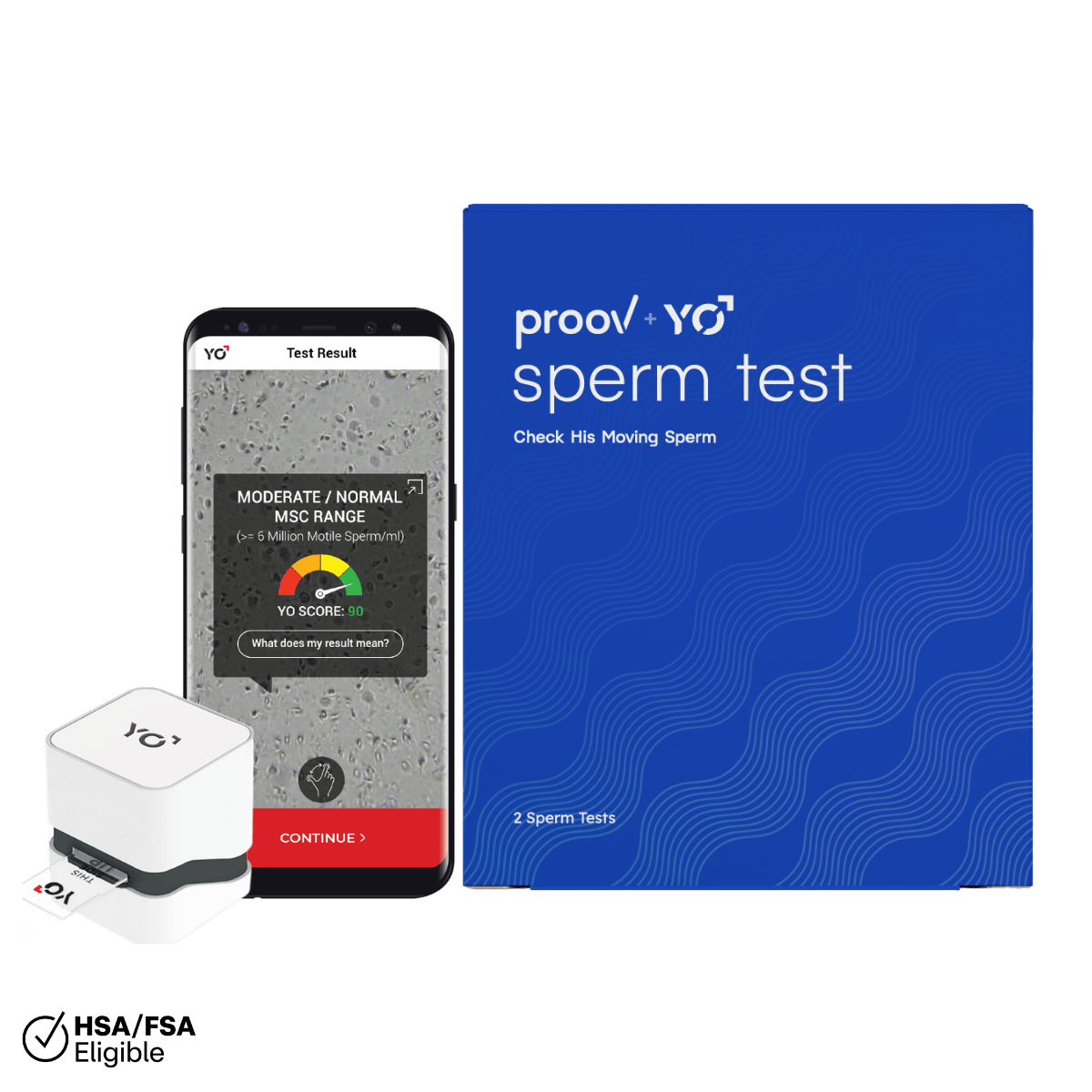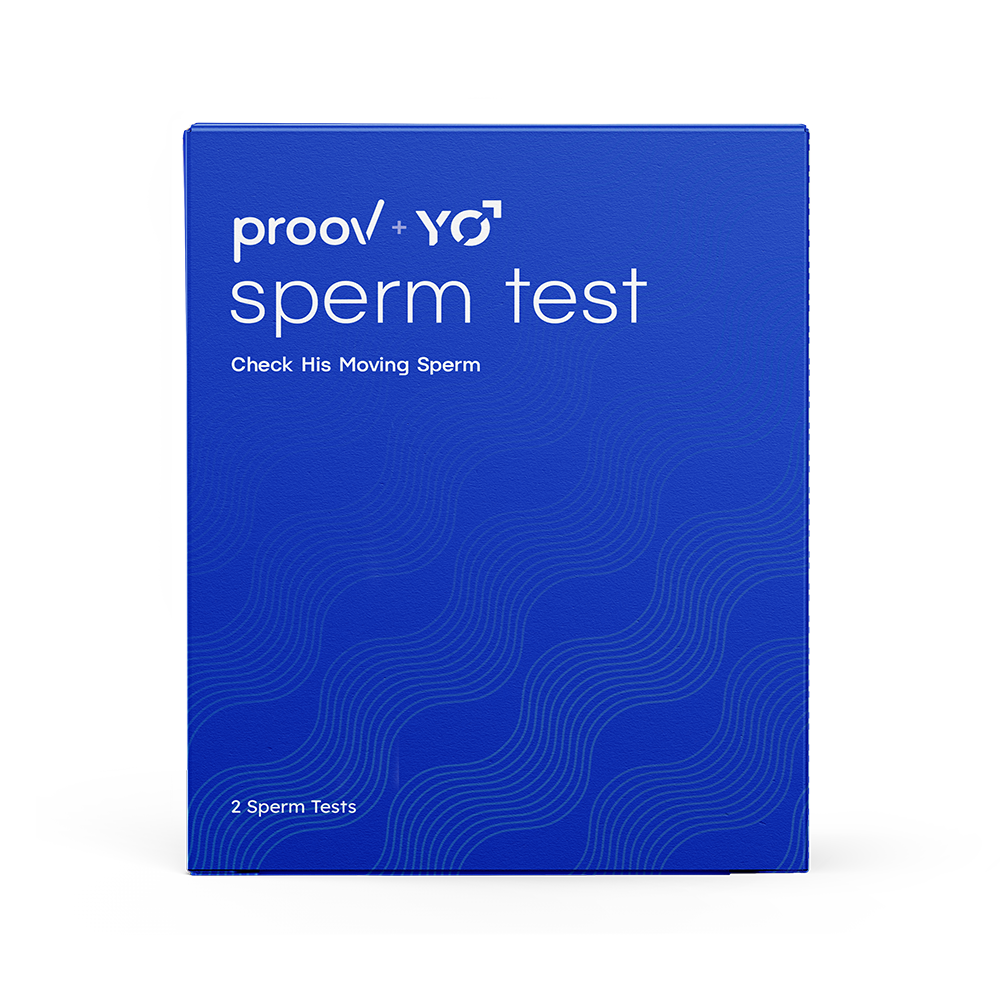Written by: Dr. Amy Beckley, PhD, Founder and Inventor of the Proov test — the first and only FDA-cleared test to confirm successful ovulation at home
Medically reviewed by: Dr. Joshua U. Klein, a board-certified Reproductive Endocrinologist, a Fellow of the American College of Obstetrics and Gynecology, and assistant professor of Obstetrics, Gynecology, and Reproductive Science at the Icahn School of Medicine at Mount Sinai in New York City. He is also Chief Clinical Officer at Extend Fertility, a leading NY-based fertility clinic. Dr. Klein has also consistently been named “New York Super Doctor.”
Written on 3/9/21
Updated on 6/24/21
Ovulation tests are great tools to help you time intercourse when trying to conceive. They give critical information about your fertile window!
But if you’re trying to conceive, do you know when the best time to take an ovulation test is? Keep reading to learn more!
What is an ovulation test and why should I use them?
Ovulation tests are reliable tools for predicting ovulation and they work by detecting a luteinizing hormone (LH) surge in your urine. LH is the hormone that triggers the ovary to release an egg.
When trying to conceive, ovulation tests can help you figure out when you are fertile and time intercourse. This is important as there are actually only a few days each cycle when you can successfully conceive. These days are referred to as your fertile window, and they include the few days leading up to and including the day of ovulation.
This is important because an egg is only viable for up to 24 hours after ovulation, while sperm can live in a woman’s reproductive system for 3-5 days. Timing intercourse before ovulation ensures that sperm is waiting for the egg when it’s released.
In a study that aimed to compare the estimated day of ovulation with the actual calculated day of ovulation in a group of 330 women, only 13 women correctly estimated their actual ovulation day! This is proof that the calendar alone is not a reliable tool for cycle monitoring, as it is based on mathematical probabilities and doesn’t take into account the actual hormonal changes in your body.
When during my cycle do I take an ovulation test?
Towards the end of the follicular phase (the first half of your cycle when the egg is growing and maturing), estrogen rises as your lead follicle grows. Once your estrogen level reaches a certain level, it sends a signal to your brain that your egg is ready to be released. This causes an LH surge that triggers ovulation.
One of the most popular fertility myths is that ovulation always occurs on cycle day 14. This is not always true! If your cycle is 28 days long you may indeed ovulate on cycle day 14. But a “normal” cycle may last anywhere between 21 and 35 days, and ovulation day changes as the cycle length changes.
If your cycles are regular the best time to take ovulation test is 4-5 days before your suspected ovulation date. However, if it is your first month trying ovulation tests or the length of your cycles fluctuates, you’ll want to start testing as soon as your period ends, so that you don’t miss the surge.
If you’re using Proov LH tests, we recommend beginning to test 18 days before your next suspected period. This means if your cycles are 28 days long, you’ll want to start testing on cycle day 10. Our instructions include a handy chart to help you do the math!
What time of day should I take an ovulation test?
When is it best to take an ovulation test? Studies show that LH in blood starts surging between midnight and 8 a.m. and the surge will show up in your urine about 3-6 hours later. That is why testing LH levels with second morning urine may be the best time of day to take ovulation test, after at least a 2-3 hours hold and a limited intake of liquids.
However, LH surges can be very short meaning they’re easy to miss. Because of this, as you near your surge it may be a good idea to test LH levels twice per day as you near your day of suspected ovulation — once in the morning and once in the evening. Luckily, Proov Predict comes with plenty of LH strips so you’ll have enough for multi-day testing.
What should I do once I get a positive ovulation test?
As we mentioned, ovulation tests are when trying to conceive to help you accurately time intercourse around your fertile window. That means that once you get a positive ovulation test it’s time to try!
Ideally though, you would have already started to do so a couple of days earlier, to cover the entire fertile window. Ovulation typically occurs about 24-36 hours after an LH surge, however you may be fertile for up to 5 days before ovulation.

From the moment you get a positive ovulation test, you should start having intercourse if you’re trying to conceive.
What do I do after I’ve ovulated?
While ovulation tests are reliable for detecting an LH surge and predicting when you ovulate, they actually tell you nothing about whether or not ovulation occurred.
A common misconception in the fertility world is that a positive ovulation test confirms ovulation. This isn’t always the case as it’s possible to have an LH surge and not ovulate.
So how do you confirm ovulation? Here are 4 ways to do so:
-
Basal body temperature tracking. Basal body temperature (BBT) tracking involves measuring the shift that happens in your body’s lowest resting temperature before and after ovulation occurs. However, BBT can be easily influenced by room temperature, alcohol consumption, or warm snuggles, leading to inaccurate readings.
- Ultrasound. After an egg is released, the uterine lining changes aspect and there is free fluid in the pelvis. An ultrasound can sometimes detect this, thus confirming ovulation, but it is expensive, inconvenient, and not commonly used. It is important for confirming ovulation, however, in the rare case of LUFs.
-
Progesterone blood test. Progesterone testing is performed around cycle day 21 — or 7 days after suspected ovulation — when progesterone levels should have had enough time to rise. However, progesterone blood tests only show levels at one point in time, even though progesterone needs to rise and remain elevated for a few days during the luteal phase in order to have a successful ovulatory event.
- Proov PdG tests. Proov PdG tests are the first and only FDA cleared PdG test kit to confirm successful ovulation at home. Proov tests measure PdG — a progesterone metabolite in urine. The advantage of PdG versus progesterone testing is that when measured in first morning urine after at least a 6-hour hold, PdG will provide an average of what your progesterone levels were in blood the day before. PdG testing is also non-invasive, meaning you can test several days in a row to ensure ovulation is healthy. Proov PdG testing can not only tell you that you ovulated, but can also help you determine if it was a succesful ovulation, giving you the best possible chance at conception.
We like to see 3-4 positive Proov tests on days 7, 8, 9, and 10 after peak fertility to confirm that successful ovulation did in fact occur. “Successful” ovulation refers to a healthy ovulatory event in which an egg was released and PdG levels remained elevated for long enough to allow for the best possible chance at conception. Without enough PdG, it can be more difficult to get pregnant.
Understanding the best time to take an ovulation test can help arm you with the tools so that you can get pregnant faster!













